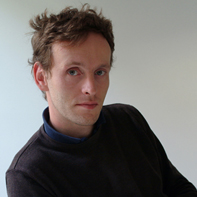04 Ene Erwan Bouroullec: The world must change and so must we
 February 2009: it’s already 6 months since the credit crunch put so many long-held positions in question. I believe that in years to come, this crisis will not be seen as a transitional period, but as the starting point for a whole new situation or a new social contract.
February 2009: it’s already 6 months since the credit crunch put so many long-held positions in question. I believe that in years to come, this crisis will not be seen as a transitional period, but as the starting point for a whole new situation or a new social contract.
A crisis that has been defined by the collapse of speculative assets which banks apparently lost control over. In hindsight, it would also seem that banks never had a clear understanding of how those financial products worked in the first place, or of their interrelations in a more global financial context. What they did know is that they invested their resources and, as a result, also the whole world system, in assets they did not truly understand.
There is a question haunting the whole of society and, therefore, designers too: have we not invested a huge amount of energy in products whose global effects we had not taken into account? To put it differently: when it comes to channelling our energy, have we not overlooked humankind’s basic needs?
Car manufacturing is a good example: in a very short time, sales has collapsed due to erroneous estimates about consumers expectations and, in a wider sense, about the demands of society in terms of commitment to a fairer type of production. I hope that in the future there is a greater understanding, as happens with green agriculture, of individual responsibilities: producers offer products that are appropriate for the human body; and consumers promote an economic activity that is fair from a political and environmental viewpoint.
Notwithstanding, I do not believe that nowadays, in regards to daily objects, consumers are in a situation to decode the significance of those products in relation with their processes of creation and production.
I hope that the future of design will go through a refounding of the relationship between producers and consumers, and vice versa. Design is at the very heart of this contract, for it listens to the desires and limitations of each party and tries to draw the best conclusion.
Therefore, the best use will be a better use of our resources for a more efficient targeting of needs and to provide more light to the producer/consumer balance of limitations.
The key question will be the pertinence of the typologies dealt with by design. We might have lost the power of the modern era, which was meant to respond to essential changes in terms of lifestyle and production. In this regard, it would be interesting to revise the Scandinavian 20th century production, whose rigorous use of materials and adaptation to function provided an excellent model.
On another note, price will always remain a key question, although the alternative is not necessarily to cut it. Price, sales as well as manufacturing price, always shadows that terrible reality where design finds itself.
And although a low price may be the driving force for the dissemination of modernism, its effects on the reality of production may end up being disastrous. Perhaps a better reading of the responsibility of producers would help consumers to be more aware about their purchases.
In that sense, the speculative effects drawing inspiration from the art market—galleries, small producers, limited editions, etc.—have added complexity to the work outside the industry and brought discredit on the profession. A deeply regrettable discredit because galleries continue being a key force in the ongoing quest, a space where engaged industrialists do not precisely abound.
Finally, beyond the already mentioned relatively quantifiable factors, in my view, the most important work is still that which looks for a sort of absolute comprising integrity, poetry and contemporaneity. I am particularly alarmed by those reactionary forces fighting against the essential liberties humankind is striving hard to achieve. I am convinced that the creative power of design, obviously within its limits, can help along the necessary changes.
More: www.articulado.org

